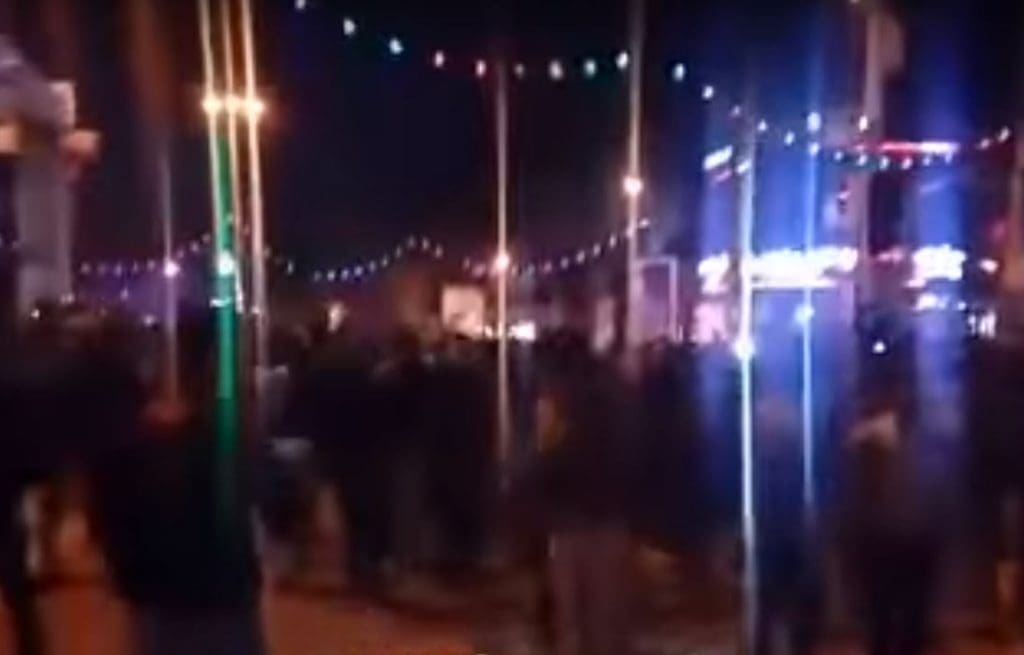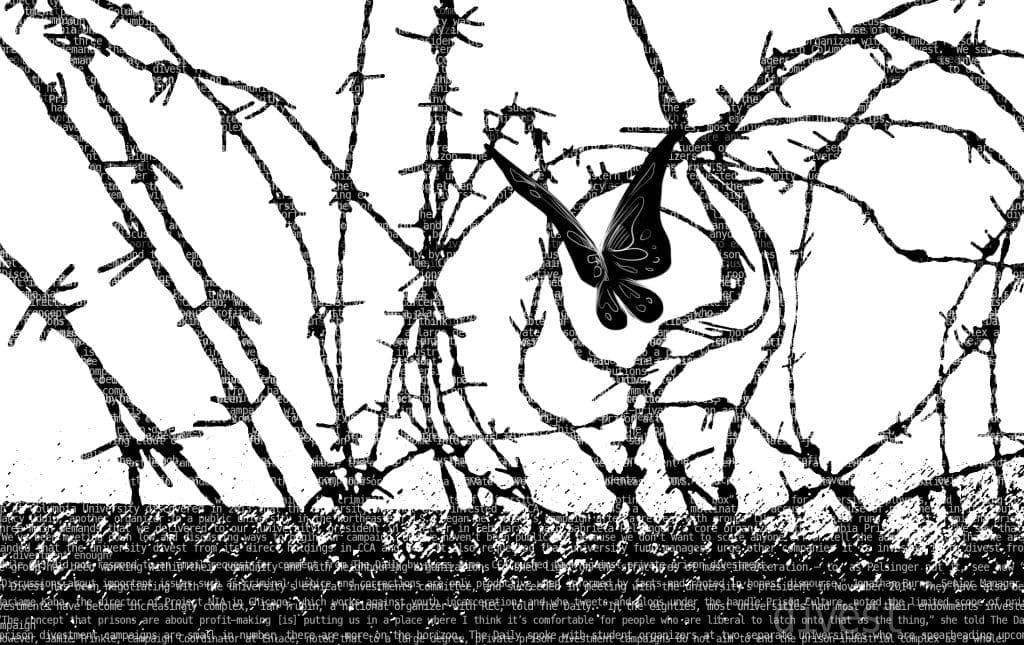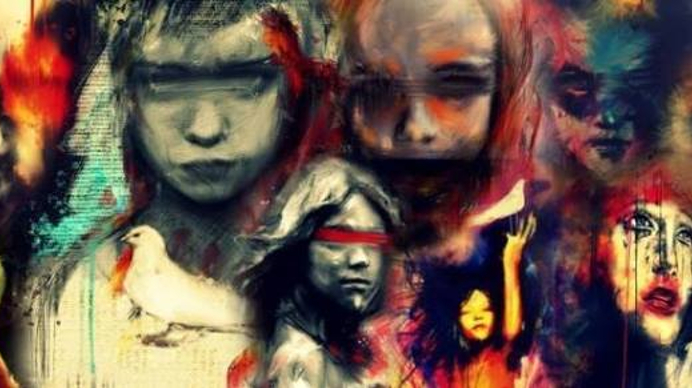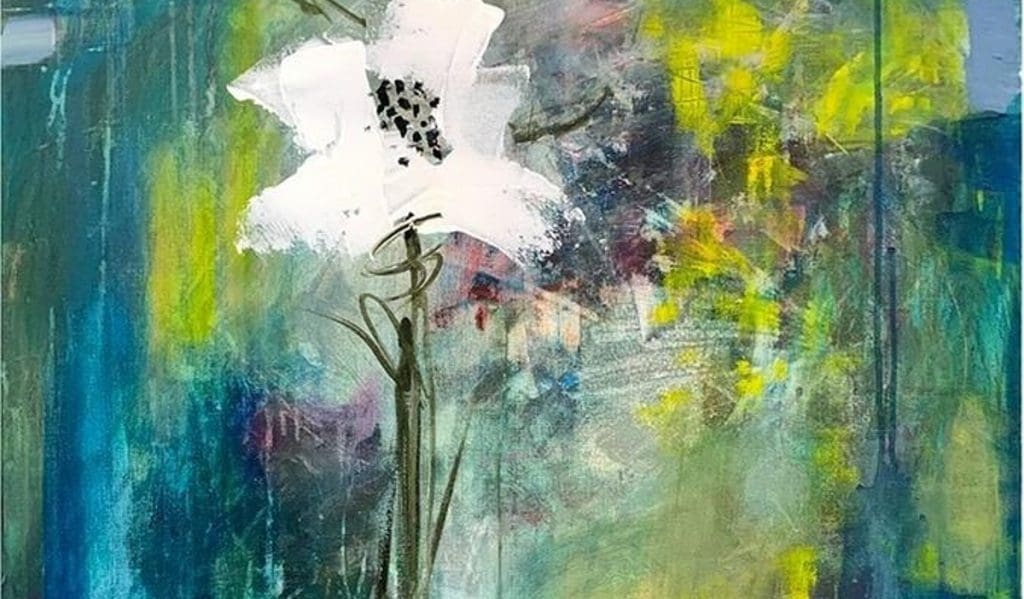Transcribed from the 20 January 2018 episode of This is Hell! Radio (Chicago) and printed with permission. Edited for space and readability. Listen to the whole interview:
Iranian politics and society surprises all of us over and over again, so why limit the options and the possibilities for a bottom-up protest to only two possible narratives?
Chuck Mertz: Every protest ever is about protesters unhappy with the economy. It’s about their wallets. Or at least that’s what the New York Times keeps telling me. So the recent protests in Iran must only be about the economy.
Here to tell us what the protests were really about, sociologist and This is Hell! correspondent Kevan Harris is an assistant professor of sociology at the University of California at Los Angeles and author of A Social Revolution: Politics and the Welfare State in Iran. This week Kevan had an article at the Washington Post which he co-wrote with Zep Kalb, headlined “How Years of Increasing Labor Unrest Signaled Iran’s Latest Protest Wave.”
Hello, Kevan.
Kevan Harris: Hello.
CM: On January 3 (only a few days after the protests started), CNN reported: “Iranians are angry, experts say, because they expected life to get better when severe sanctions were lifted after the deal in 2015 between the P5+1 and Iran over its nuclear program. While restrictions on financial, energy, and transportation sectors were removed, hundreds of Iranian entities were not taken off the black lists, and the United States has moved to create new sanctions over other violations, including a rocket launch this past summer.”
So to what degree are these protests the outcome of Trump’s anti-Iran policy? How accurately can Trump claim that he is the cause of anti-government protests in Iran?
KH: As most listeners may know, starting on December 28, 2017, a series of protests began in Iran. It started in the second-largest city in Iran: Mashhad, in the east, not a small town. Within two days, protests had erupted in the western part of the country—Iran is quite large—and then protests spread to many cities. In just over a week, over 75 cities had had at least one protest. So by geographical breadth (although not necessarily by depth, in terms of the numbers of people total who protested), these are the largest protests in Iran since the 1979 revolution. In fact, in terms of geographical spread, they are larger than the 2009 Green Movement, which appeared after that year’s presidential election.bSo this is a very important moment in Iran’s history.
The protests have largely petered out; it lasted about a week and a half. The grievances of many of the protesters that were expressed on the street ranged from anti-corruption slogans to all-out calls for a change of the political establishment. There were slogans against some of the well-known politicians in Iran. There were “throw the bums out” style slogans, as well as lots of other grievances against Iranian foreign policy and the social contract, which has frayed in Iran over the past few years.
From outside, the evidence for this was largely videos put online. Iran’s internet is not totally open, but it’s also not totally closed, and there are a variety of ways people can put videos online; lots of people in Iran have smartphones, so a lot of videos of protests went online. As usual, it’s difficult from outside to tell how many people are protesting, how many people are chanting. A lot of times, videos tend to concentrate on where the action is: where someone’s tearing down a sign, or the loudest part of a crowd. So it’s hard to judge; people who claim that they know how many people have protested are probably trying to sell you something. We don’t really know. But the scale is quite wide, so it was serious.
The outside interpretation at the beginning came in two forms. For the usual suspects, the Iran Hawks in Washington and their various in-house writers and pundits, this was an opportunity. On the one hand, it was an opportunity to once again claim that Iran is not a functioning state, people don’t want that government—and obviously, given the slogans of protesters, there’s an element of truth to that. However, it was also an opportunity (as usual) for people who have wishful thinking when they see protests somewhere. Sometimes they don’t really analyze with a cool head, so they thought this was the beginning of the revolution, and Iran’s going to collapse, and the United States should help. In fact there was a debate for a few days, both inside the government as well as in the Washington chat-o-sphere, over aiding the protests.
The problem was that we didn’t know who they were. They didn’t have any leaders. We had no idea who to give money to. Even worse, a couple days in, there were op-eds in the Wall Street Journal that said we should be giving arms to protesters. So it got a little bit crazy on that side.
The response by another group of writers, many of whom are 22 or 23 years old but are now for some reason the experts on Iran on the left (it’s a strange business), has been: “No, you’re taking advantage of these protests, which, while they are valid, are not as important as you think, and this is just instrumentalizing Iranian protests while there are protests going on in Tunisia, in Ethiopia—huge protests! No one’s talking about those in Washington.” In other words, this is just instrumental, and in fact, because protests aren’t really happening in Tehran (which is true, although some did), they’re not important; this is just wishful thinking on the part of Iran Hawks.
I felt a bit uncomfortable when this conversation was going on. I was watching all these things, but I didn’t want to write anything. I mean, who knows? Iranian politics and society surprises all of us over and over again, so why limit the options and the possibilities for a bottom-up protest to these two options—overthrowing the government and everybody’s on the same page, or this is not important and we should focus on geopolitics (the nuclear deal and reform in Iran).
First of all, it’s not like there hasn’t been any protest in Iran over the last four or five years. In fact, since the election of Hassan Rouhani in 2013, anyone who reads the actual news in Iran will know that there has been more and more protest over lots of different issues, whether it’s classic working class protests over not getting paid, or teachers’ protest over conditions in their workplaces, or retired civil servants protesting because their pension payment is on hold. There’s been lots, and it’s been rising and rising.
There are things going on in Iran that don’t necessarily have to do with the United States, as much as people on the left in the United States might find that crazy.
And it’s actually very different from the type of protesting that Western journalists pay attention to; Western journalists pay attention to protests that look like they are expressing demands for political and social rights that we identify with the so-called middle class. Not to have to wear the hijab, for example, or freedom of speech, or electoral rights—a very American-style understanding of democracy. But they have no link (at least in Americans’ minds) to socioeconomic grievances and a social contract.
Obviously in Iran it’s a little bit different. Many of us have been watching, writing about, and pointing to the rising tide of protests since 2013. Myself and a bunch of other people put out a whole issue of the journal MERIP Middle East Reports a couple years ago, all about class inequality in Iran and how people have been cut out of the new deals being cut by Iran.
So that’s the groundwork. The protests were and weren’t economic. Even economic protest is really about people’s understandings of whether they are being included in the social changes that are occurring or not. As far as we know, a lot of the grievances were really about how they felt excluded from the deals being made at the top by the Islamic Republic: with the West, with various factions inside the country, and also with Tehran. The middle class in Tehran has been doing pretty well the past few years in Tehran compared to the rest of the country.
CM: There was another article at the Washington Post by Dina Esfandiari, a fellow in the war studies department at King’s College in London and an adjunct fellow at the Center for Strategic and International Studies. She wrote, “The recent spate of protests in Iran has ebbed, at least for the moment. The unrest caught the regime off guard. Initially it responded in the usual manner, by blaming foreigners and discrediting protesters. But in a pragmatic move, the leadership then acknowledged the protesters’ demands. This is new and significant, because it signals a willingness to open up in order to stay in power. But doing too little or too much will jeopardize the system.”
How has the Iranian government reacted? How have they recognized protesters’ demands? I saw a report of over a thousand people being arrested and at least 25 people being killed. So how has the Iranian government reacted in the way that Esfendiari describes it here?
KH: It’s good here to compare the most recent wave of protests with the protests that happened in Iran in 2009. The protests in 2009 were largely concentrated in the capital Tehran, and although a lot of people participated, it is true that a lot of the protesters were middle class; they had a de facto leadership; it looked much more like a social movement that everybody could agree on. Also, the government at that time was run by conservatives. Mahmoud Ahmadinejad was president, and the unelected bodies of the Islamic Republic were also run by conservatives.
But the political establishment in Iran, certainly since 2013, has been divided, and there is internal competition between the Rouhani government (which is centrist-liberal in the economic sense, and a bit in the social sense as well), the executive branch with its technocrats in their ministries, and the unelected bodies that still have a lot of influence over internal policy (like parts of the military and other parts of the government). They’re divided, and they’ve been fighting each other publicly in newspapers for the last four years.
One of the things that they’ve been yelling at each other about is corruption. So everyone hears that Iran is very corrupt—where does this come from? In the past four years there has been a relative opening of the media sphere, and there have been lots of accusations of corruption from all sides against each other, including people who are now out of the government. It’s not surprising, by the way, that somebody growing up in Iran who’s young, 21, 22, is going to hear all this stuff and say, “I must live in the most corrupt country in the world! This place is going to hell, and when the protests finally come to my town, after all these years, I’m going to show up.”
A rising discourse of corruption is one factor, then, and the political establishment is competing a lot. In light of this competition: when these protesters show up, what’s the response by different sides in this competition? On the one hand, there is the usual knee-jerk reaction: this is probably the CIA, Israel, you name it. But the thing is so big, and it contains constituents whom many politicians claim to have spoken for in the past—the poor, the working class, the provincial—and all of the sudden they’re in the street saying “I hate you bums, get out of here.” So mainly these different factions or political groups of elites all want to say it’s the other guy’s fault. They continue their competition, and the protests have an impact on this competition; that’s what’s really going on. It’s pretty amazing.
In 2009, the response to the protests was: “You have no legitimate grievances, and you have to get off the streets, otherwise there will be dire consequences.” That’s what the leader of Iran said in a sermon a week after the protests started in 2009. This time around, the president of the Islamic Republic, the Leader, the military, the Friday prayer leader of Tehran—most of those guys are very conservative—all said “You know what? Some of these people have a point.” Of course there’s going to be talk of spies and everything, but they still gave credit to the protests and said there were legitimate reasons to protest, that “we hear you.” This is a big moment in Iran. This did not really happen with the political establishment of the 1990s, for example, when there were also lots of protests.
In that sense, Dina is correct. There’s been a change. Of course, politics now begins. Protests in Iran, over time and in a recurring fashion, have put pressure on the political establishment, and that has led to a variety of changes in the elites themselves. There’s a high likelihood it’s going to happen again, and the focus of the Islamic Republic’s administration and Rouhani was really on the middle class for the last three or four years. It’s no coincidence that the 2009 protests made the voices of the middle class salient in the ears of the political establishment, so Tehran was their focus, and they wanted to make sure all of those people were placated. Now the rest of the country is saying, “Hey, what about us? You left us out.” Now we’re going to see the politics of that.
As for Trump—it’s not Trump. There is a framework for not only the financial strictures on banking in the Islamic Republic, but there’s a Sword of Damocles that the United States holds over foreign capital coming out of, say, Europe, that is interested in investing in Iran but is worried that there’s no such thing as a deal between the United States and Iran, because the United States can renege at any time and there’s no punishment for the United States. So it’s not Trump; it’s the framework of the sanctions, which the deal promised to alleviate, but the United States can still exert informal pressure on European businesses that want to invest in Iran.
It’s politics now. But the politics of the moment are more open now than they were a couple years ago. It might not go the way that Washington wants.
After the deal was passed under the Obama administration, and of course now with the election of Trump, Iran Hawks (almost all of DC is Iran Hawks; there are very few “doves,” if one can even call it that) are saying, “Okay, fine, we can’t unilaterally walk out of the deal, that would be embarrassing, that would be a loss of face for the United States. But instead we can make this deal so bad in its implementation that the Iranians, because they’re so stupid, will abrogate on their own accord, and we’ll say ‘A-ha! They were never intending to do it in the first place!’” The smarter people in Washington said to Trump, “Don’t tear up the deal. Let’s just make the Iranians’ lives difficult.”
I wouldn’t say that “caused” the protests. That would be a leftwing canard. There are things going on in Iran that don’t necessarily have to do with the United States, as much as people on the left in the United States might find that crazy. For example, let’s say there was a big influx of foreign capital into Iran. Would that lead to solving all of Iran’s problems? That doesn’t sound like a very leftwing thing to say either. There are things going on inside Iran, in the political economy, that have to do with internal reasons, not necessarily because of the availability of capital.
Nevertheless, they are linked. And part of it is that Rouhani promised so much in 2013, and in 2015 when the deal was signed, and in 2017 when he was reelected. The kinds of transformations that come when you get foreign capital to come in, even when everything works out like the textbook (which, almost always, it doesn’t), take ten or fifteen years. But they were promising that a lot would happen “in my administration.” I think part of this is blowback around that.
CM: How accurately could these be labeled as anti-Rouhani protests? What would you miss if you only labeled it as an anti-Rouhani protest?
KH: There’s no coherent alternative or program from the protesters’ grievances. It’s very inchoate, because there’s no political organization on that side. And part of it is because of the Iranian government itself. They don’t let labor associations have independent unions, and civil society organizations exist but there’s not a lot of political discussion on alternatives other than through vertical channels that are tied to parts of the political elite themselves.
So it’s not surprising that somebody who has an inchoate understanding of politics in Iran sees it all as one—it’s just the system, man. There are people who talk the same way about United States politics: “They’re all the same.” Well, just like Thomas Friedman, I have taken cabs in the Middle East, and in Iran when I’m in a cab, I hear the phrase “Oh, they’re all the same, they’re a bunch of bums.” It’s a common discussion of politics in Iran.
This is a “throw the bums” or “they’re all a bunch of bums” type of understanding. I don’t think that’s the most important thing. It’s not the target as much as the power that’s expressed in the streets that’s important. That’s what we try to get at in the Washington Post piece, that there’s been a rising street politics in Iran that’s been forcing the government to respond. And they respond in different ways. As you pointed out, the response to these protests has been both the left hand and the right hand, as we say.
If you take a look at the videos—it’s pretty amazing. A lot of these videos are in towns that I’ve been to, towns of a million or five hundred thousand, and I recognize some of the squares where these protests are happening. They’re not huge protests—maybe five hundred people. But they’re pissed off. And the cops are standing right there. In one video, people are yelling at them and throwing stuff at them, and these cops do not move; they’re not doing anything, they’re just taking it. There are other videos where cops are swinging wildly and hitting people, so then they get yelled at.
And part of the point we were trying to make in the piece is that this has come out in the last few years of protest—there’s been lots and lots of protest in Iran that hasn’t been reported on in the West, and the response to these protests has also been both of these types. There are protests where workers show up at the business headquarters and sit down and say, “You’ve got to pay our pensions, you’ve got to pay our wages, we’re not going anywhere,” and sometimes the police come and there’s negotiation. Other times, there have been crackdowns.
And that’s what happened this time, too. It’s not just a thousand, by the way. Last I heard, it was four thousand people who got at least detained. People get swept up in these things and then they get let out after a couple days—although some of them don’t. And yeah, there have been at least 25 deaths, and some of them are people who died in jail. So it’s not like the state is totally benign. On the other hand, given the geographical scale—75 cities? Think about it, that’s pretty wide, so there hasn’t been a systematic crackdown where every protester is dealt with the same way. There was no plan to deal with these things. Different parts of the security apparatus and the police have dealt with it differently.
But certainly the competition at the top of the government that I mentioned earlier has created a check on full-throttle crackdowns on these protests, again because the different sides of the political elites see the protests as kind of useful, actually, because they really want to stick it to the other side. And as we know from lots of other countries, when there’s a division in the political elite protest happens, that makes more opportunity for change—not necessarily full-scale overthrow of the government, that’s pretty rare, but change—and different segments of the political elite reform their agendas, break off with former allies, or make new allies. This has happened many times in Iranian political history.
So I think it’s going to happen again. Again, it’s politics now. It’s not that the arc of history has to go this way. But the politics of the moment are more open now than they were a couple years ago. It might not go the way that Washington wants.
CM: Thanks so much for being back on the show, Kevan.
KH: You got it.





